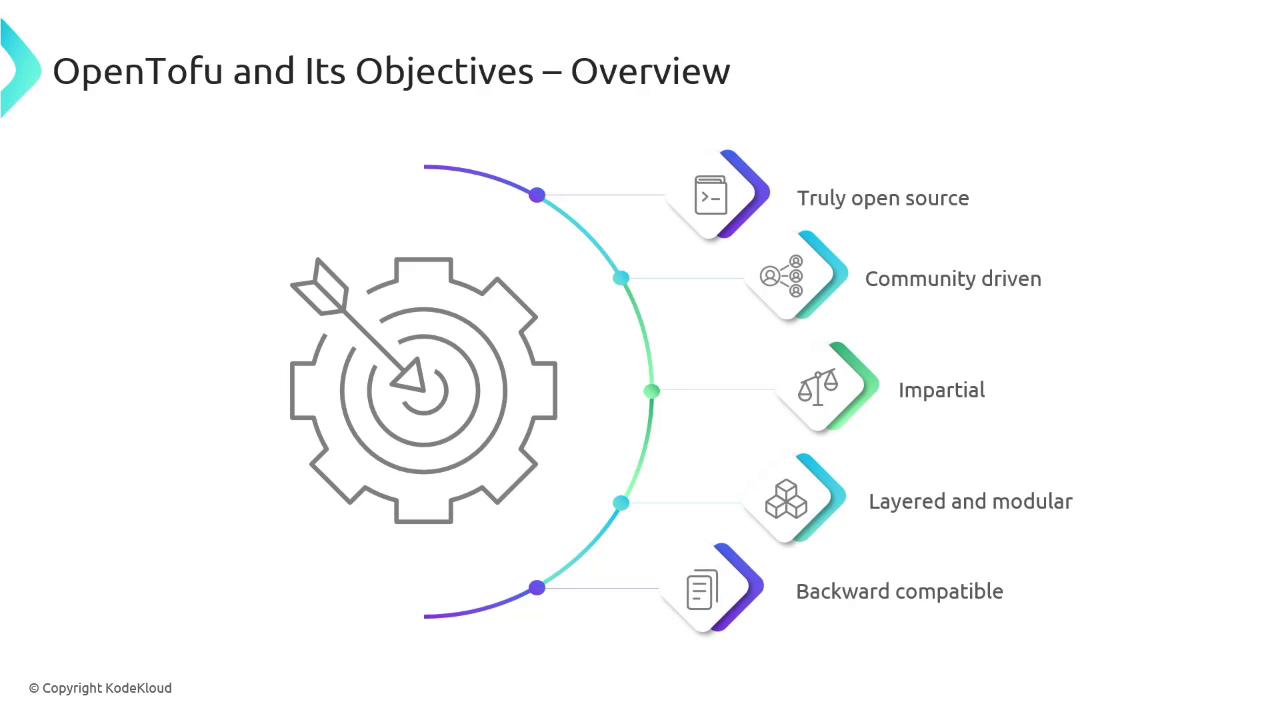OpenTofu: A Beginners Guide to a Terraform Fork Including Migration From Terraform
OpenTofu Beyond Basics
Overview of OpenTofu and its objectives
OpenTofu is a community-driven, open source Infrastructure as Code (IaC) solution designed as a flexible alternative to Terraform. It emphasizes transparency, collaboration, and innovation, enabling teams to automate cloud provisioning and manage infrastructure at scale. Its primary objectives are:
| Objective | Description |
|---|---|
| Truly Open Source | Licensed under the Mozilla Public License 2.0 to guarantee vendor neutrality and long-term stability. |
| Community-Driven | Governed by contributors; features and pull requests are reviewed purely on merit. |
| Impartial | Prioritizes improvements based on community value rather than corporate interests. |
| Layered & Modular | Offers a developer-friendly architecture with extension and plugin support. |
| Backwards Compatible | Ensures most existing Terraform configurations continue to work seamlessly. |
Note
OpenTofu maintains backward compatibility with Terraform 0.12+ configurations, simplifying migration and ongoing maintenance.

Core Features and Advantages
OpenTofu uses the familiar HashiCorp Configuration Language (HCL) syntax and workflow, making it easy for Terraform users to get started. Its key benefits include:
- Familiar HCL2 syntax and “terraform-plan/apply” workflow
- Advanced plugin system with built-in support for major cloud providers
- Efficient state management and remote backends for team collaboration
- Transparent, merit-based governance and rapid community releases
- Extensible architecture for custom providers, modules, and integrations

Links and References
Watch Video
Watch video content